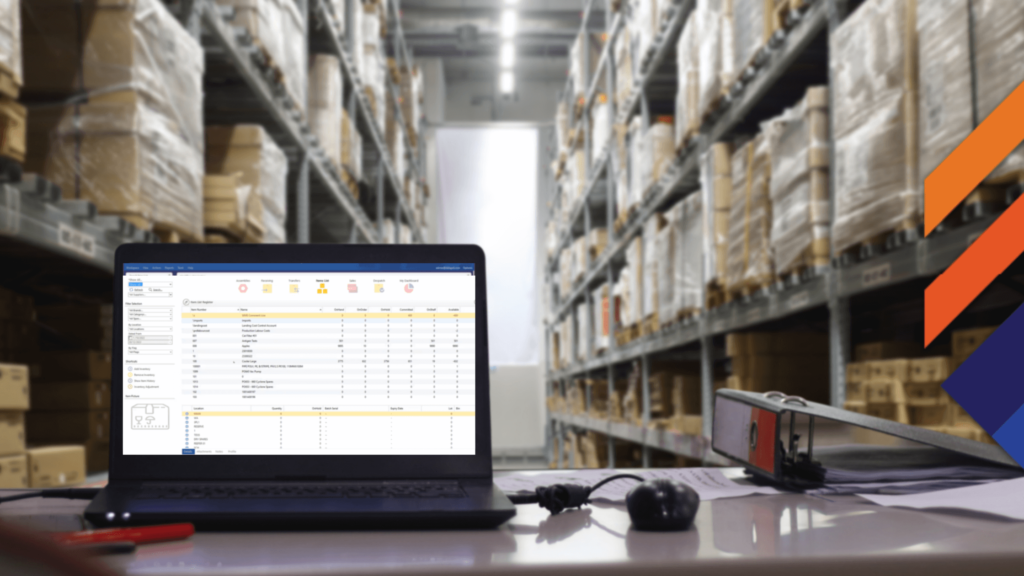A Comprehensive Guide to Warehouse Management
Contents
Warehouse management is part of supply chain management. It’s about moving goods through your warehouse so they get to the customer on time and in one piece.
The warehouse management process covers everything and everyone involved in managing a warehouse from the moment a product goes in until it’s shipped to the end user. Like any part of a business, how you manage your warehouse affects the business as a whole.
It’s a never-ending process of continuous improvement. Every time you improve one area it sets a new baseline for future improvement. For example, managing your inventory better can save you costs by reducing the amount of wasted space in your warehouse.
Let’s dive in.
What is Warehouse Management?

The warehouse is where all the magic happens! Meaning, that if you need something the warehouse pulls it out of a hat. Ah, if only this were true. In a perfect world, warehouses wouldn’t exist and when people need something it’s just delivered to their doorstep.
This is ideal but effective warehouse management is part of any business’s supply chain. Inventory management is about stock throughout the supply chain tracking goods within a facility and optimizing on-hand inventory.
Because customer demand is unknown goods need to be constantly supplied and replenished. The network of suppliers, warehouses, demand centres and transportation partners that make up your supply chain must all work together to ensure demand is met.
This means managing your warehouse space, processes and inventory levels so you always have the right products and quantities to deliver. eCommerce has made this harder as demand is more unpredictable and customers want faster and more flexible delivery.
Warehouse Management Tools and Strategies
There are many tools and strategies you can use to improve your warehouse management. Some of these are Warehouse Management Systems (WMS), advanced picking technology or a complex inventory management system to always have the right products. The future of warehouse management solutions is looking good with continuous developments and innovations coming.
Whether you’re just starting in warehouse management or looking for ways to improve your processes, staying current with best practices and industry trends is key. So your warehouse management solution runs smoothly and your business grows.
Perform better

To perform better there are many tools and strategies you can use. Some of these are a WMS, advanced picking technology or inventory management software to keep your warehouse running smoothly.
Warehouse management includes inbound and outbound logistics, timely equipment maintenance and upgrades, tracking inventory, stock level and inventory control and storage facility monitoring. Poor warehouse management means increased costs, delayed deliveries and decreased customer satisfaction.
To avoid these problems, you must monitor your warehouse operations proactively and stay current with industry best practices and trends.
Top ten items to measure in your warehouse

There’s plenty to measure within the four walls of a warehouse and let’s not forget the yard space. Here are ten of the most common:
1. Inventory
Inventory management is the foundation of warehouse operations. Measuring inventory helps you strike the right balance between having enough stock to meet customer demand and too much stock and stockouts.
2. Shipping and Receiving
Tracking goods in and out of your warehouse means products flow through your supply chain. Accurate shipping and receiving data means timely order fulfilment, no delays and happy customers.
3. Equipment Maintenance
Well-maintained warehouse equipment means operational efficiency. Regular maintenance and tracking of equipment performance means no costly downtime and no disruption to customer orders.
4. Organisation
An organised warehouse means increased productivity and order accuracy. Implementing a systematic storage and labelling system based on product attributes means your warehouse team can find and pick items quickly.
5. Employee Training
Investing in full employee training is key to a capable and confident workforce. Proper training in warehouse operations, equipment handling and software usage means employees are more efficient, have fewer errors and have a safer working environment.
6. Throughput
Measuring the speed and efficiency of your warehouse processes means you can improve continuously. Analyse throughput data to find bottlenecks, optimise workflows and increase productivity.
7. Inventory Accuracy
Accurate inventory tracking means your warehouse always has the right products in the right quantities. Accurate inventory data means demand forecasting, less overstocking and no stockouts.
8. Safety
Warehouse safety means safety for your employees and your bottom line. Promote a safety culture and implement safety protocols to reduce accidents, medical costs, employee downtime and potential legal liabilities.
9. Order Fulfilment Accuracy
Timely and accurate order fulfilment is key to customer satisfaction. Measure order fulfilment accuracy to keep your customers happy and get repeat business and brand loyalty.
10. Security
Protecting your inventory from theft and damage means profitability. Strong security measures including surveillance systems, access controls and inventory storage and tracking mean your assets are safe.
By focusing on these areas of warehouse management your warehouse will always be running smoothly.
Whether you want to improve, reduce costs or increase customer satisfaction there are many tools and strategies to help you achieve that. One of the best tools to manage your warehouse is a WMS.
What is a Warehouse Management System (WMS)?

A WMS is magic if you’re using manual systems or spreadsheets to manage your warehouse.
A WMS is a software solution that helps you manage all aspects of your warehouse including inventory levels, shipping and receiving, equipment maintenance, organisation methods, employee training, throughput rates, order fulfilment accuracy and more.
Reporting and dashboards are part of a WMS so you can track and analyse all aspects of your warehouse in real-time. WMS solutions also often come with more advanced inventory management software features such as RFID tracking, barcode scanning, automated picking systems and more.
In short, a good WMS means warehouse managers can optimise. Historically WMS wasn’t affordable for SMBs so they used manual processes, excel or managed the warehouse with out-of-the-box ERPs that weren’t designed for warehouse operations.
Even before supply chain disruptions the value of a WMS was clear. Whether you want to improve, reduce costs or increase customer satisfaction a WMS can help you find warehouse management software and stay ahead of the game.
Principles of Warehouse Management

Knowing warehouse management tools and operations principles means you can focus on optimising your warehouse.
This includes:
- Get the goal right. Most warehouse operations have a clear objective in mind. What are some specific customer requirements? Are there any special storage options? Warehouse operations are meant to use warehouses and equipment efficiently.
- Control everything in one place. Warehouse management means managing a process that combines people, equipment, ordering and stock. Store.
Warehouse Fulfilment Strategies
Choosing fulfilment strategies that match your business size, volume or order type will improve shipping, reduce waste and increase customer satisfaction. Applying a pick strategy that matches the order types you get will keep your workflow smooth.
For example: Technology can also support warehouse fulfilment strategies. Mobile device displays that show the location of a package, serial number and lot number can increase pickability. The software can also provide safe and cost-effective packing based on product size so every item will arrive on its own.
Storage Operations
Store operations using storage systems in storage buildings can maintain the highest stock and inventory turnover to optimise storage space and quick product retrieval.
Key tasks include regular cycle count and stock inventory accuracy strategy transfer for space optimisation, inventory and storage. Storage operation is critical to warehouse efficiency to allow safe access and ready delivery and therefore reduce stockouts or overstock.
Outbound Operations
Inbound operations in storage are focused on delivering products to the end customer or the next stage of the supply chain. In combination with storage and internal processes, outbound operations give customers immediate satisfaction.
The main activities are picking products on customer orders, packaging those products sorted by end destination and delivering from warehouses. The outbound operation is where customers get tangible results by getting products to them quickly.
Warehouse Optimisation
To optimise warehouse operations each component has to be tweaked. When the recipient gets a package an employer will label their product with an RFID code or a barcode so when the shipment arrives or is recalled it’s easier to find the product.
During put away the warehouse will store items at maximum capacity and optimise its capacity. Best practices to optimise warehouses are to put popular products in inaccessible storage locations and remove items that can be misplaced easily.
Benefits of a Warehouse Management System
Choosing a Cloud-based WMS has many benefits and all of them lead to business productivity. Some of these benefits are:
Inventory levels and accuracy
A WMS gives you real-time visibility of inventory levels so you can easily see and address concerns or discrepancies. The software can also track product movement within the warehouse so all items are shipped and received as they should be.
More efficiency and productivity
A WMS simplifies warehouse operations like data entry, order fulfilment, picking and packing so you can get more out of your warehouse workforce.
Cost reduction
A WMS can help you reduce many operational costs associated with printing, picking and shipping.
For example, barcode scanning can optimise inventory movement, reduce errors and lower labour costs. Using a WMS to track performance metrics like order fulfilment rates will allow you to see where to improve and make changes.
Customer satisfaction
A WMS can increase customer satisfaction by getting orders out on time and accurately. The software can also help you streamline operations so you reduce the chances of errors or delays that will frustrate customers.
Most of all a WMS gives your warehouse leadership more time to lead their team. Instead of spending their time on day-to-day operational tasks, they can focus on training new staff, assessing equipment needs, improving processes to reduce costs and overall strategy implementation.
Get in Touch
Looking for a WMS that will help you with inventory levels and accuracy, more efficiency and productivity, reduce costs, increase customer satisfaction, empower your teams to perform and allow your leaders to lead? Look no further than Datapel.
This easy-to-use but powerful WMS has reporting and dashboarding features to track and analyse all aspects of your warehouse operations in real-time. Contact us today for a free consultation!
FAQ’s
What is basic warehouse management?
Warehouse management is the oversight of warehouse operations to ensure efficient storage, handling and movement of goods. It includes inventory management, space and process optimisation and timely delivery of goods.
What are the 4 basic functions of a warehouse?
The 4 functions of a warehouse are:
- Receiving from suppliers.
- Storing.
- Picking and packing.
- Shipping to customers.
What does a warehouse manager do?
A warehouse manager is responsible for the day-to-day operations of the warehouse. They manage inventory, coordinate receiving and shipping, maintain warehouse equipment, optimise warehouse layout and manage warehouse staff to get things done efficiently.
What is the most important thing in warehouse management?
The most important thing in effective warehouse management is accurate and efficient inventory management. This means having the right products in the right quantities at the right time to reduce costs and meet customer demand.
What are the 5 areas of a warehouse?
The 5 sections of a warehouse are:
- Receiving area where goods are received and checked.
- Storage area where goods are stored until needed.
- Picking area where goods are picked according to orders.
- Packing area where goods are packed for shipping.
- Shipping area where packed goods are shipped to customers.
What 3 things does a warehouse provide?
A warehouse gives you:
- Storage for goods until needed.
- A warehouse management system to track inventory so goods are stocked up.
- Facilities to pack and ship goods to customers.
What is the first step in warehouse management?
To start managing a warehouse you need to assess your inventory requirements and the warehouse capacity. This means implementing a warehouse management system that can monitor and manage inventory levels, allocate space and control the movement of goods throughout the warehouse.
How do you manage inventory in a warehouse?
To manage inventory in a warehouse you can deploy a Warehouse Management System (WMS) to track stock levels in real time.
Also, use barcode scanners to increase accuracy. Review inventory levels regularly to avoid overstocking or stockouts. Use inventory management techniques like FIFO (First In, First Out) to keep products fresh and reduce waste.
How do you manage warehouse workers?
Warehouse staff need in-depth training on warehouse operations, safety procedures and equipment usage.
Clear communication channels and performance expectations with incentive programs to motivate and reward high performance. Regular feedback and professional development opportunities are also key to managing warehouse staff.

In my role, I oversee the development of insightful blogs that delve into the intricacies of warehouse management. Each piece reflects my dedication to empowering businesses through informative content. Through my team’s extensive experience in the industry, we aim to bring clarity to the complexities of WMS, helping businesses make informed decisions.
Join me on a journey through the ever-evolving landscape of warehouse technology as we explore the latest trends, industry insights, and practical tips to streamline your operations. Feel free to connect, and let’s embark on a collaborative exploration of how WMS can redefine your business efficiency.
Cheers to innovation, efficiency, and the exciting world of warehouse management!









